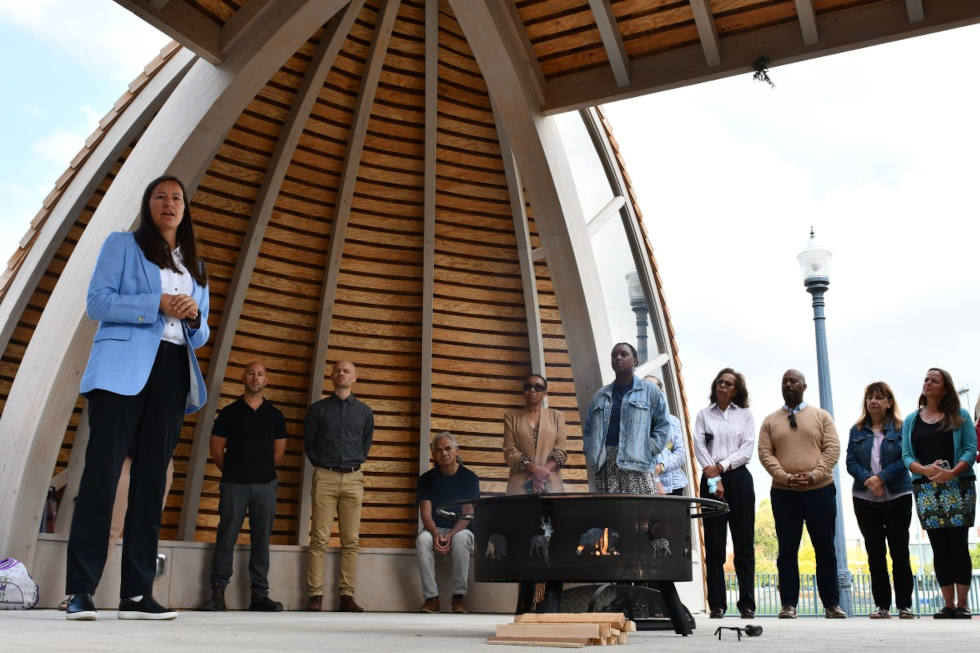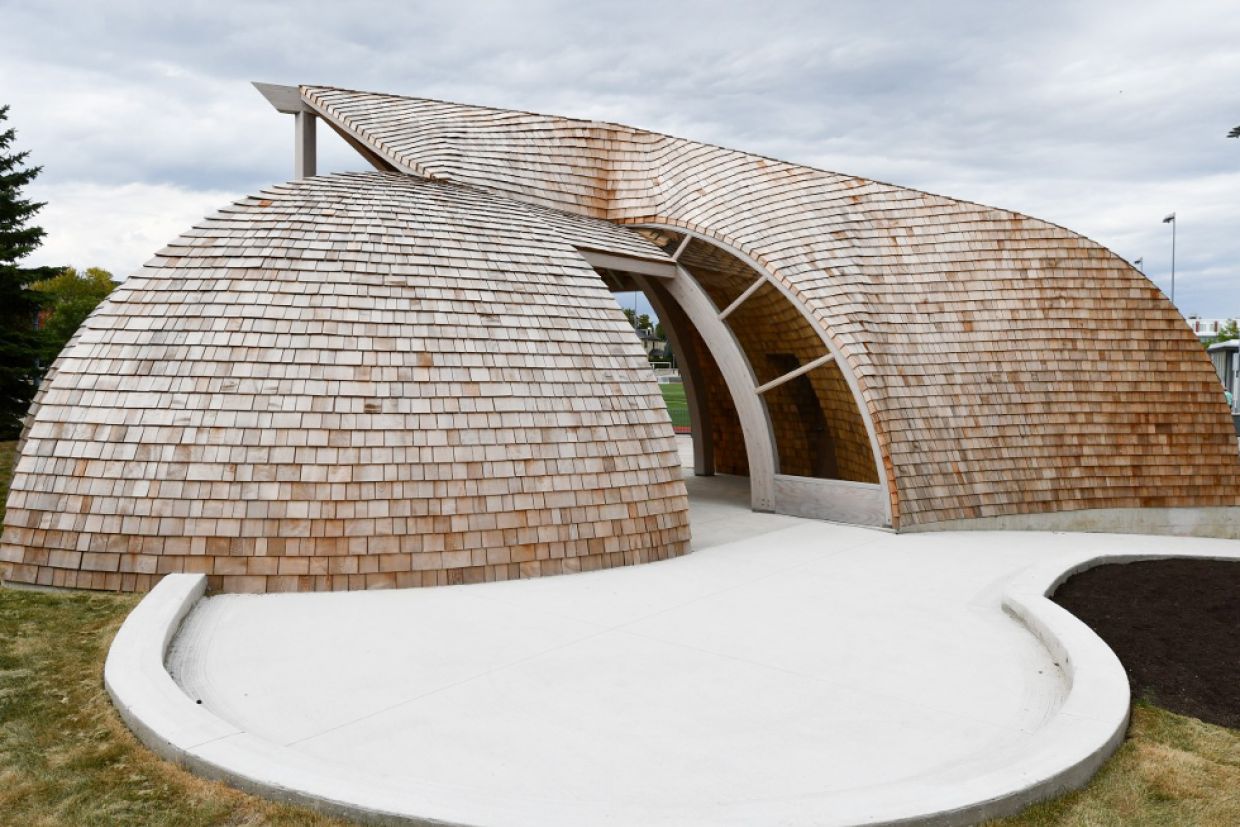Members of the Queen’s community gathered to celebrate the official opening of a new outdoor Indigenous gathering space on campus. Located at the south end of Tindall Field, the new space will now serve as an important place for learning, ceremony, and reflection. The public opening came after a special event the week before for Indigenous members of the Queen’s community.
“This is a teaching and learning space for the whole campus, with a focus on the teaching of Indigenous studies and giving Indigenous faculty a space where they can teach classes in the ways they have always taught, in the ways we have always come to know things,” said Kandice Baptiste, Senior Director, Student Inclusion, Equity, and Belonging, during remarks at the event. “I look forward to seeing many classes here that are taught in circle and flipped from the traditional lecture style so that folks have an understanding of the history of this territory and are exposed to different ways of knowing and being on this campus. The land is our first teacher, and this is purposefully made to be in the land so that we can as a campus better understand our roles and responsibilities as human beings.”
Baptiste also credited Queen’s Associate Vice-Principal (Indigenous Initiatives and Reconciliation) Kanonhsyonne (Janice Hill), who is currently on leave, with having the original vision for the space and for making it possible.
The distinctly curved structure of the new building is inspired by traditional Anishinaabe wigwams, and the design incorporates significant Indigenous symbology. Entryways are positioned facing east and west, denoting the rising and setting of the sun, and the overall design nods to the medicine wheel and is designed for sacred ceremonial activities like smudging.
The architect of the space, Eladia Smoke of Smoke Architecture, was on hand at the event and reflected on the significance of the design.
“There are so many teachings embedded in our pre-Contact architectural forms that we tried to bring into the space, and I hope that is of use to anyone who teaches, learns, or shares knowledge here,” said Smoke. "It is so rare for institutions to have spaces like this that are usable spaces that are outdoors and connected to the land. These places are really powerful.”
The project’s construction was funded by a donation from Bader Philanthropies, Inc. – long-time supporters and donors to Queen’s.
“I’d like to thank Bader Philanthropies and the Bader family for their support of this important project,” says Vice-Principal (Advancement) Karen Bertrand (Artsci’94). “Supporting Indigenous causes was important for Isabel Bader. She grew up in Northern Ontario and was aware of the importance of reconciliation work and the building of bridges with Indigenous communities.”
Additional funding for the project comes from the Office of the Principal and the Office of the Provost, as well as from the Faculty of Arts and Science.
Part of the Queen’s ongoing commitment to truth and reconciliation, the structure’s location was selected to work in harmony with other notable Indigenized areas of campus, including the Kanonhweratónhtshera G’di-mikwanim (The Welcoming Room) in nearby Mackintosh-Corry Hall, and new Indigenous spaces in the neighbouring Agnes Etherington Art Centre, being created as part of Agnes Reimagined. The new space will join a wider array of Indigenous spaces across campus as well, like the recently opened Endaayaan-Tkanónsote student residence and its outdoor courtyard Indigenous gathering space.
Allen Doxtator, Elder in the Office of Indigenous Initiatives (OII) and a member of the Bear Clan, spoke at the event about the important role Indigenous spaces play in decolonization efforts on campus.
“This space is about being Indigenous. And since it’s outside there’s a better view of learning, a better view of who we are,” said Doxtator. “In those classrooms inside you’re surrounded by four walls, and that’s all you see, that’s all you know. In order for Indigenous people to make this space Indigenous, our minds have to be Indigenous. We have to decolonize our minds while we’re in this space. Our minds are colonized by classrooms, but here you can open up your mind to a lot of different ways of learning and understanding.”
Queen’s Facilities played an instrumental role in constructing the project and bringing the design for the space to life. Erik Harmsen, Project Manager, spoke about what made this a special initiative for Facilities.
“I got to learn so much through this project about the meaning of the significant pieces of the design,” said Harmsen. “It felt like such a privilege to be working alongside the team at the Office of Indigenous Initiatives, and to see it here now is lovely. I know it means a lot to our team and that this will be a very important part of the campus.”
Following the remarks, members of the Mohawk community from Tyendinaga marked the importance of the event by leading attendees in an Indigenous round dance.
Learn more about Indigenous initiatives at Queen’s on the OII website.
This story first appeared in the Queen’s Gazette.



